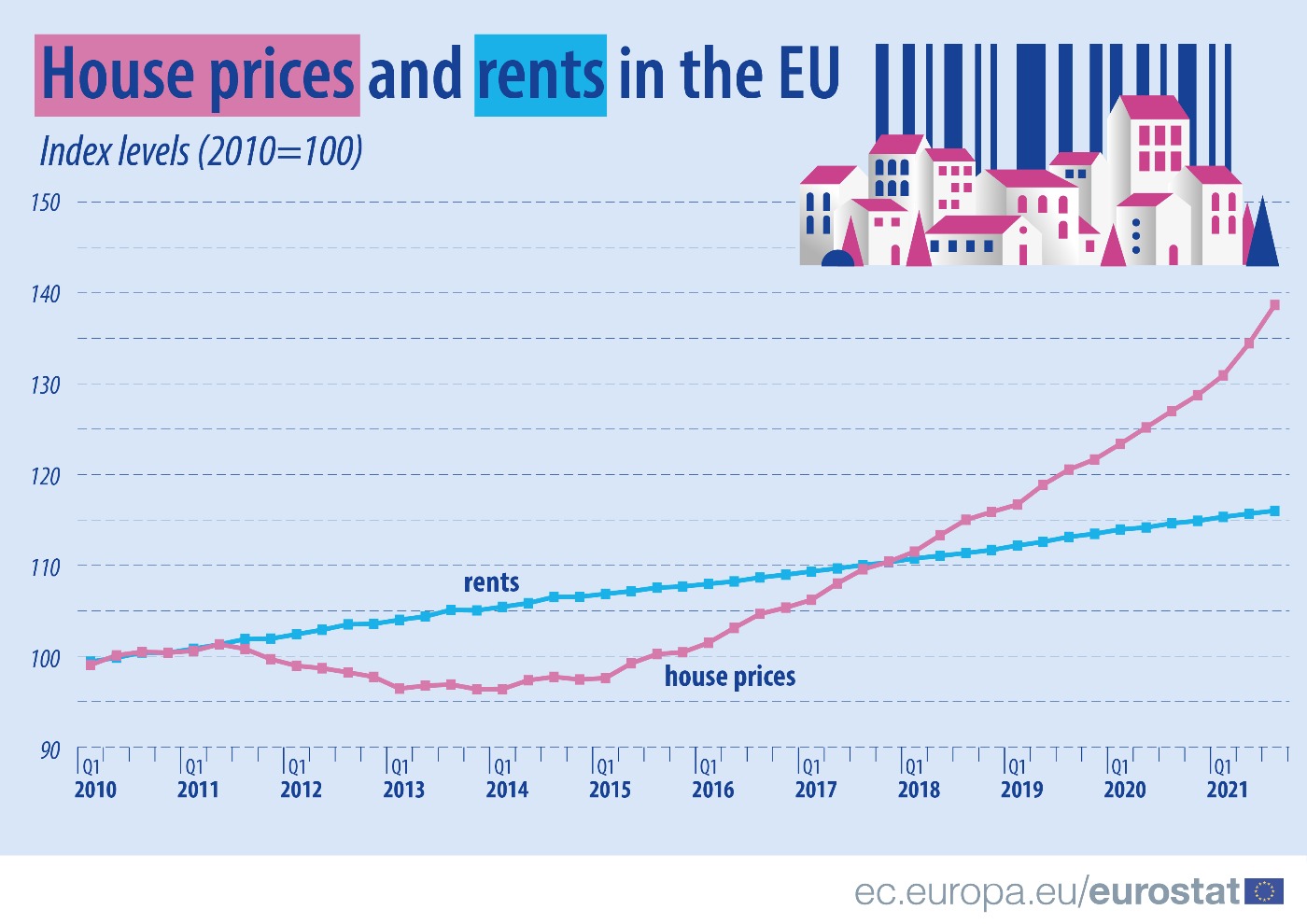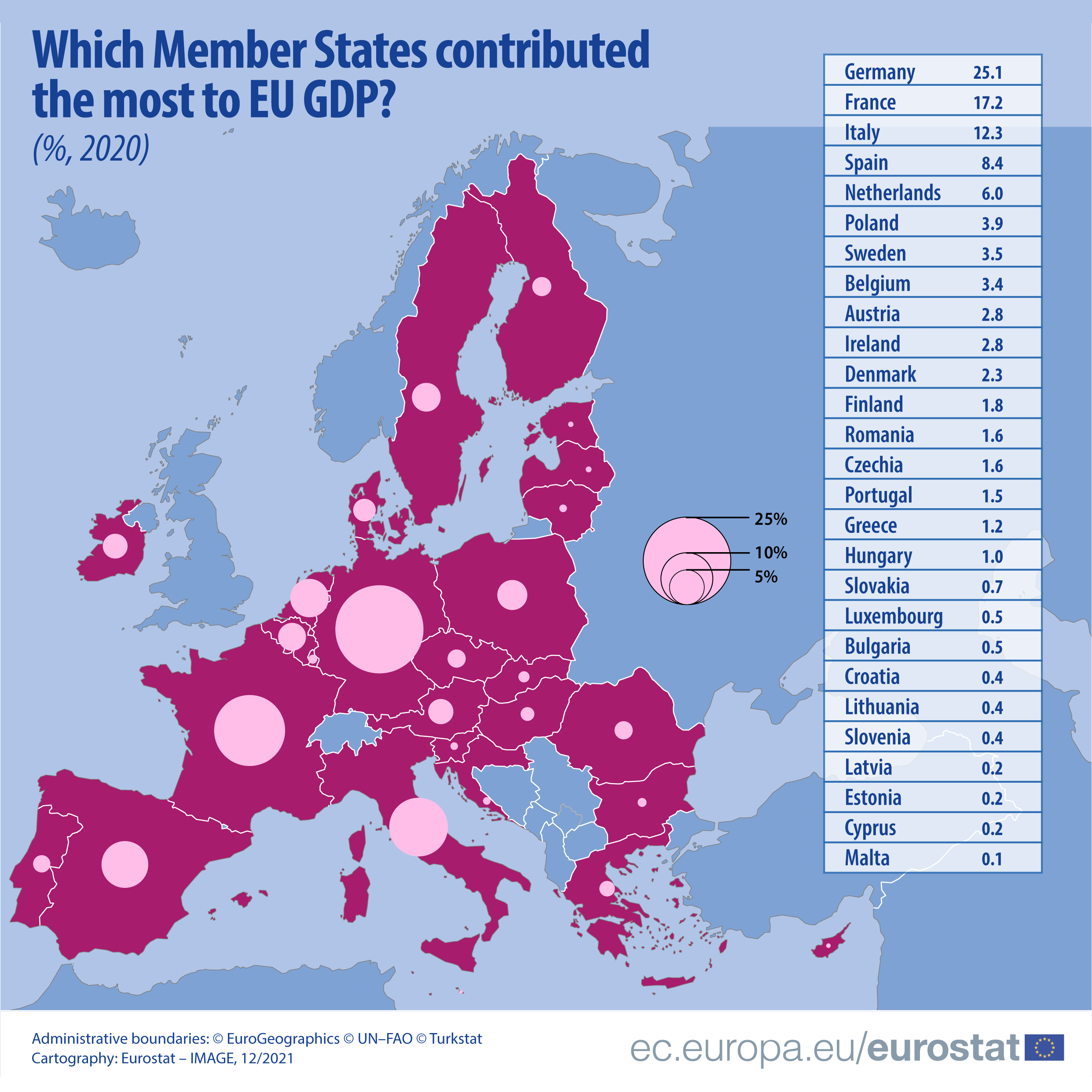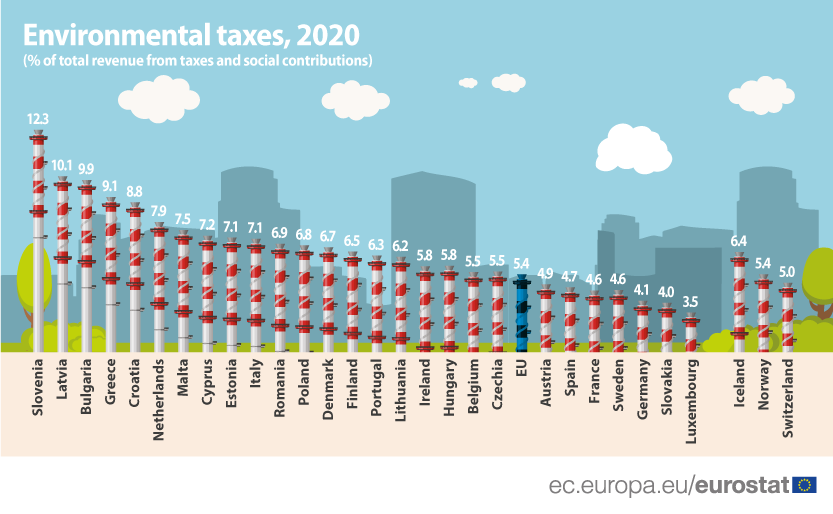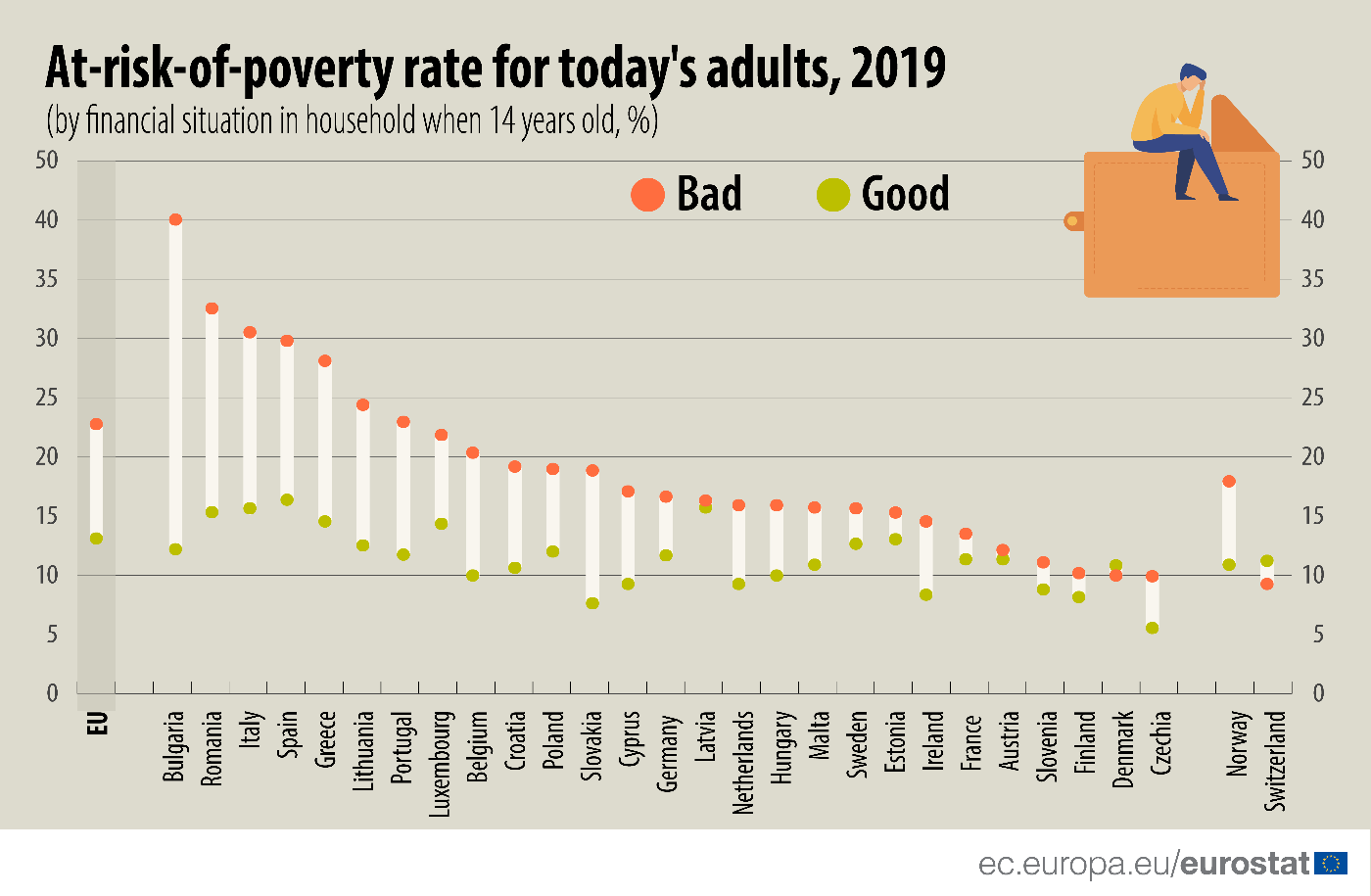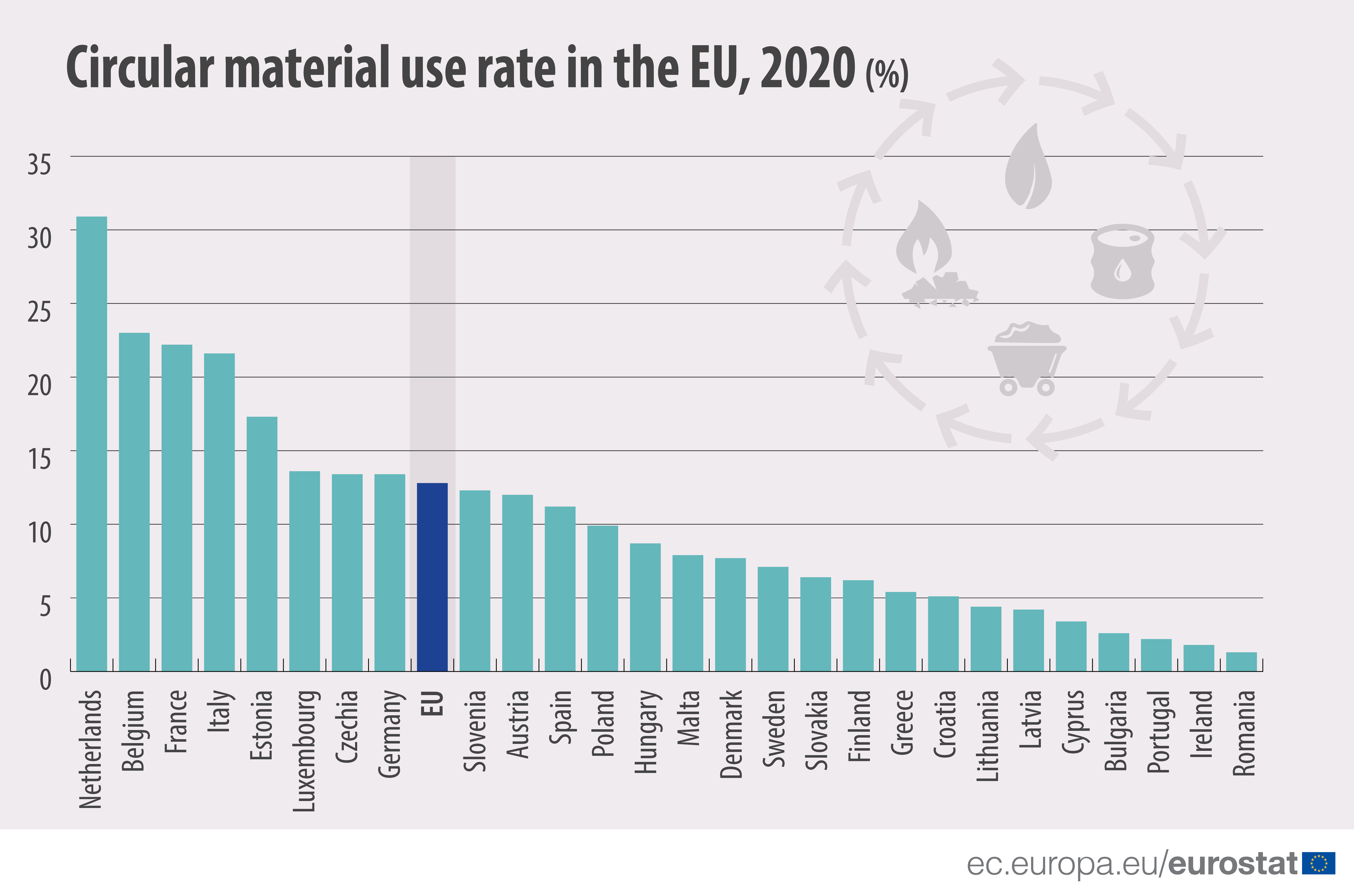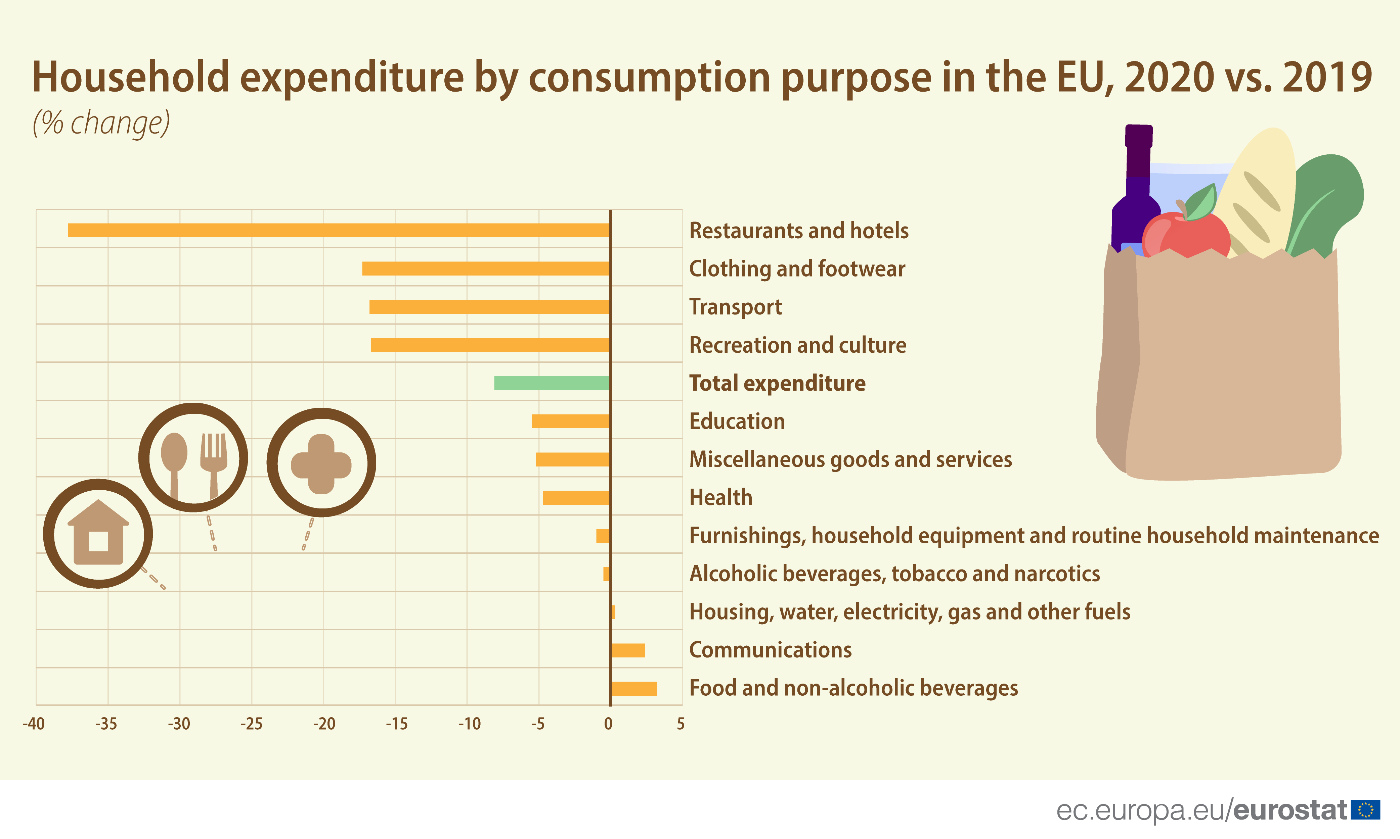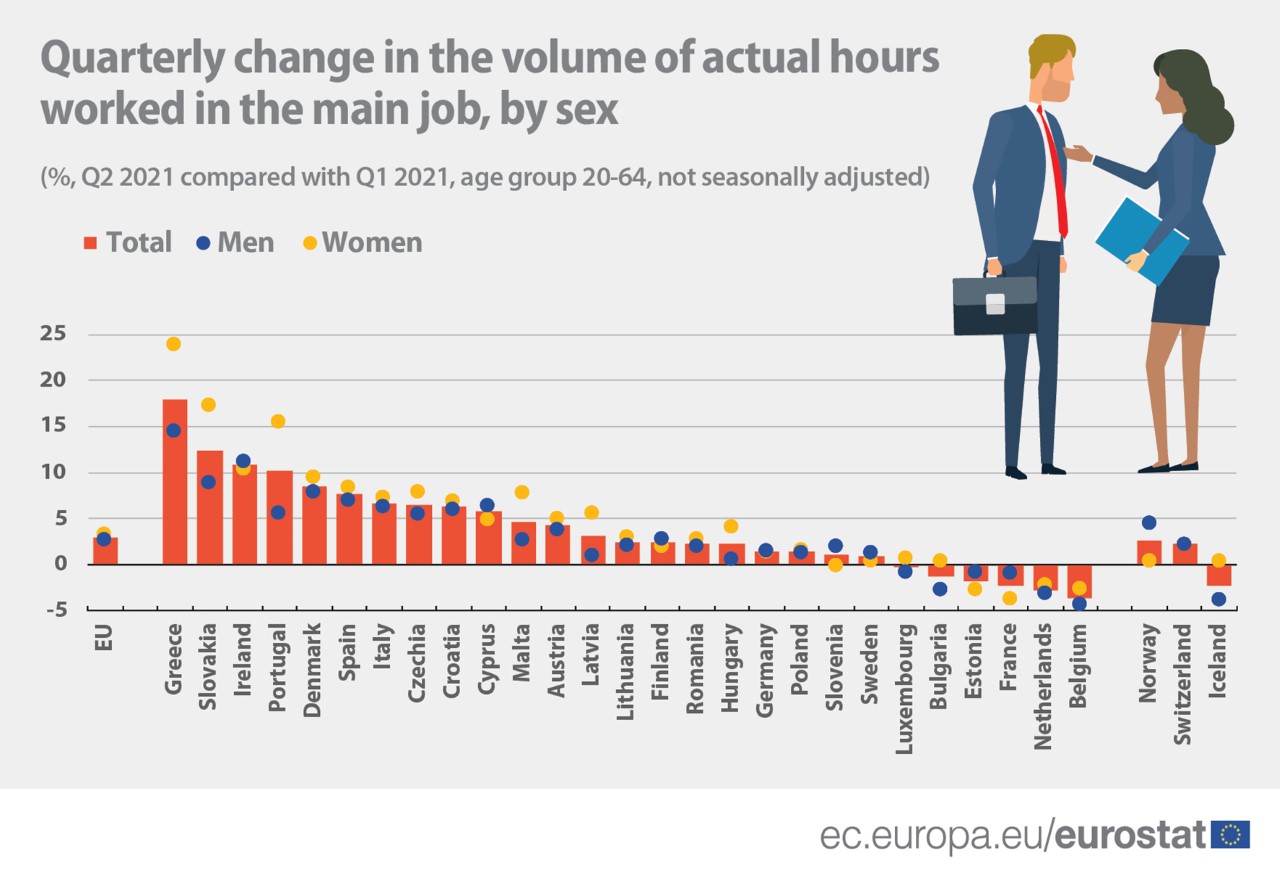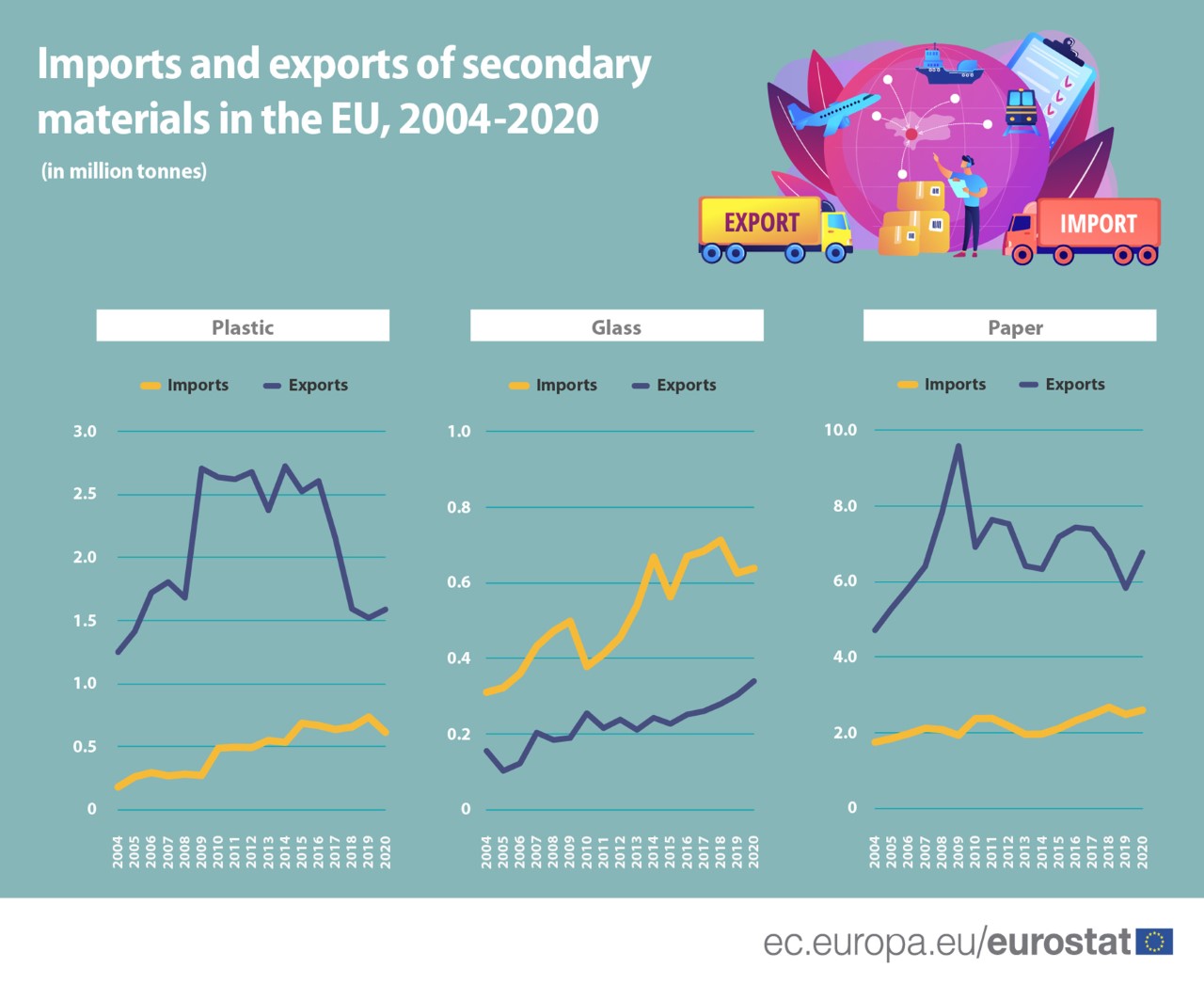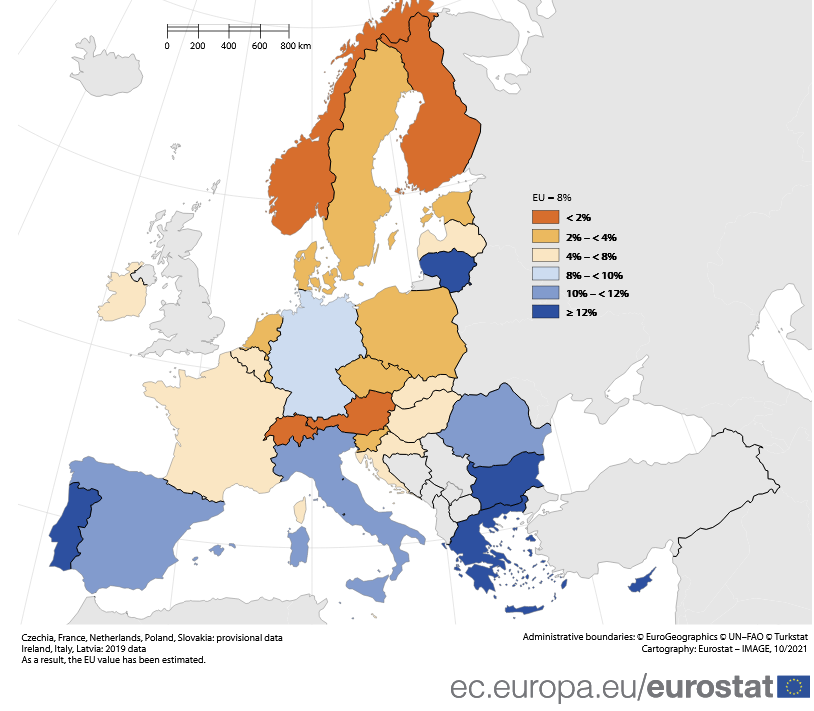In 2021, the vast majority (94%) of EU enterprises with at least 10 employees and self-employed people used a fixed broadband connection to access the internet.
Statistics
Rents and house prices in the EU have continued their steady increase in Q3 2021, going up by 1.2% and 9.2% respectively, compared with Q3 2020.
In 2020, the gross domestic product (GDP) of the EU stood at around €13 400 billion at current prices. In real terms, the EU’s GDP in 2020 was 7.6% higher than its level a decade ago.
In 2020, environmental tax revenue in the EU amounted to €299.9 billion, corresponding
There is a correspondence between the financial situation of the parents’ household and the risk of poverty among today’s adults.
In 2020, the EU’s circular material use rate (referred to as the circularity rate) reached 12.8%. This means that almost 13% of material resources used in the EU came from recycled waste materials
In 2020, household consumption expenditure in the EU decreased by an unprecedented 8% in 2020 compared with 2019.
During the second quarter of 2021, employed people aged between 20-64 years in the EU worked 3.0% more hours in total in their main job when compared with the first quarter of 2021.
Despite the pandemic, the total traded amounts in € of glass, paper and cardboard secondary waste materials didn’t change significantly between 2019 and 2020, while for plastic it dropped by almost
An EU-wide survey concluded that in 2020, 8% of the EU population said that they were unable to keep their home adequately warm.

